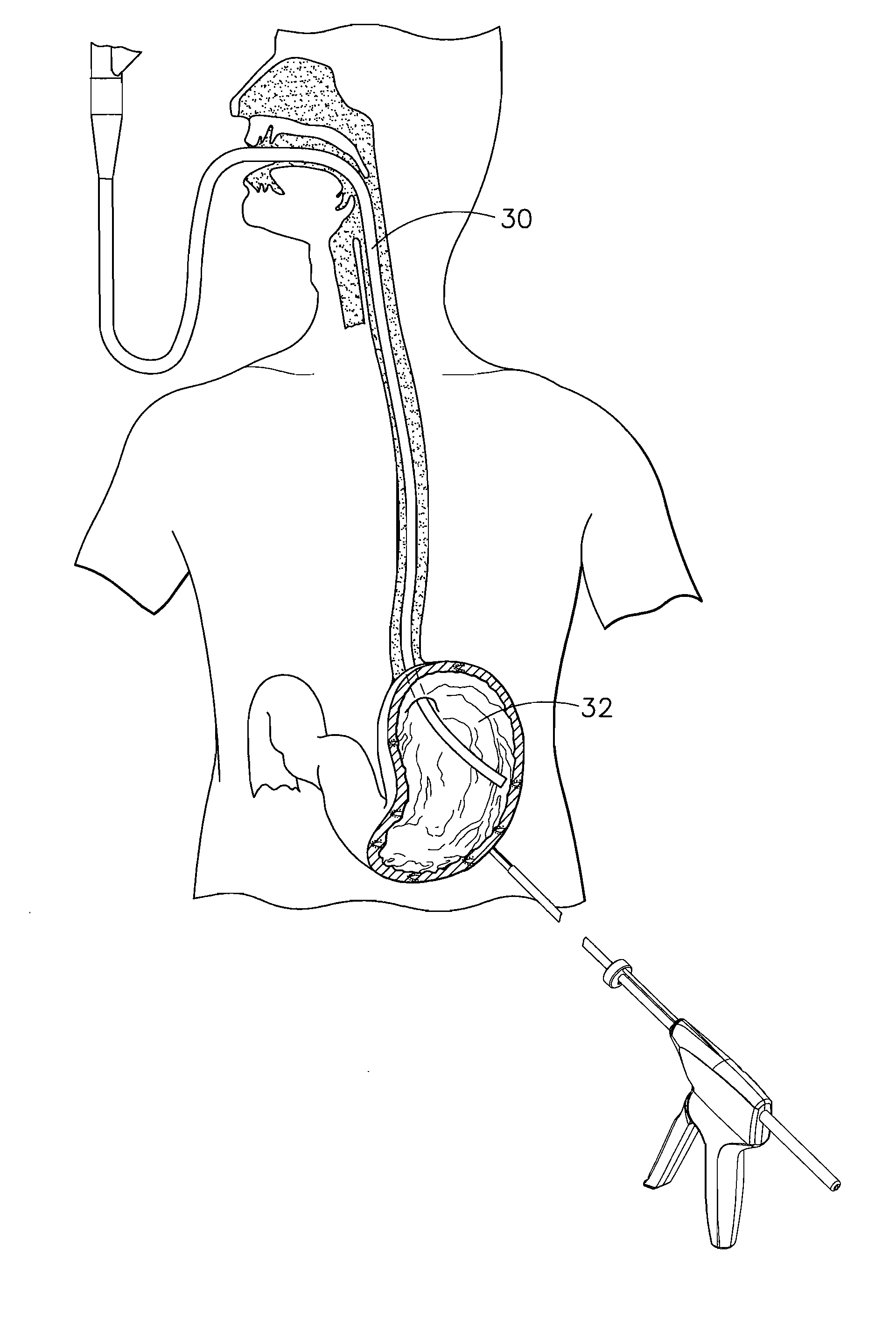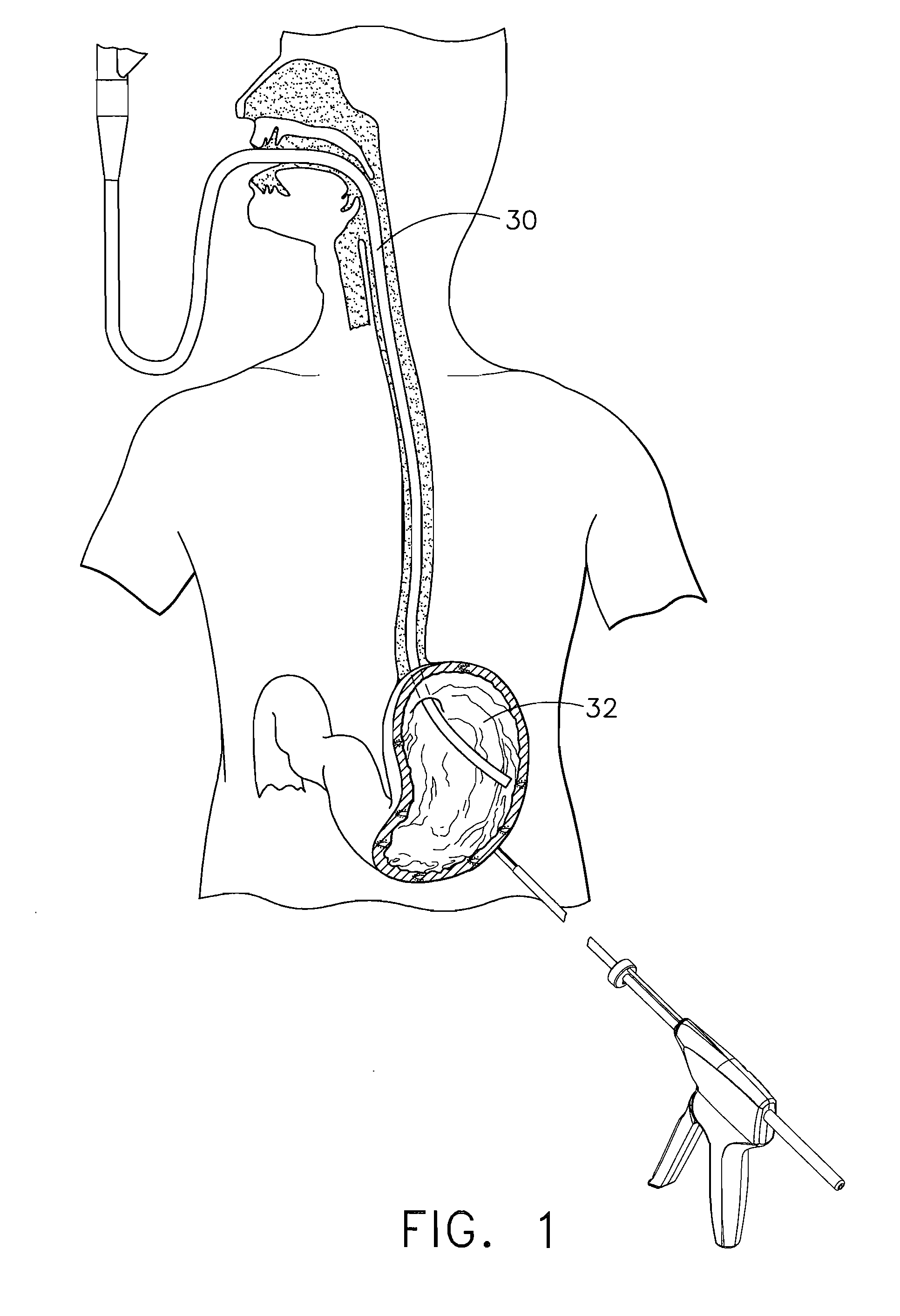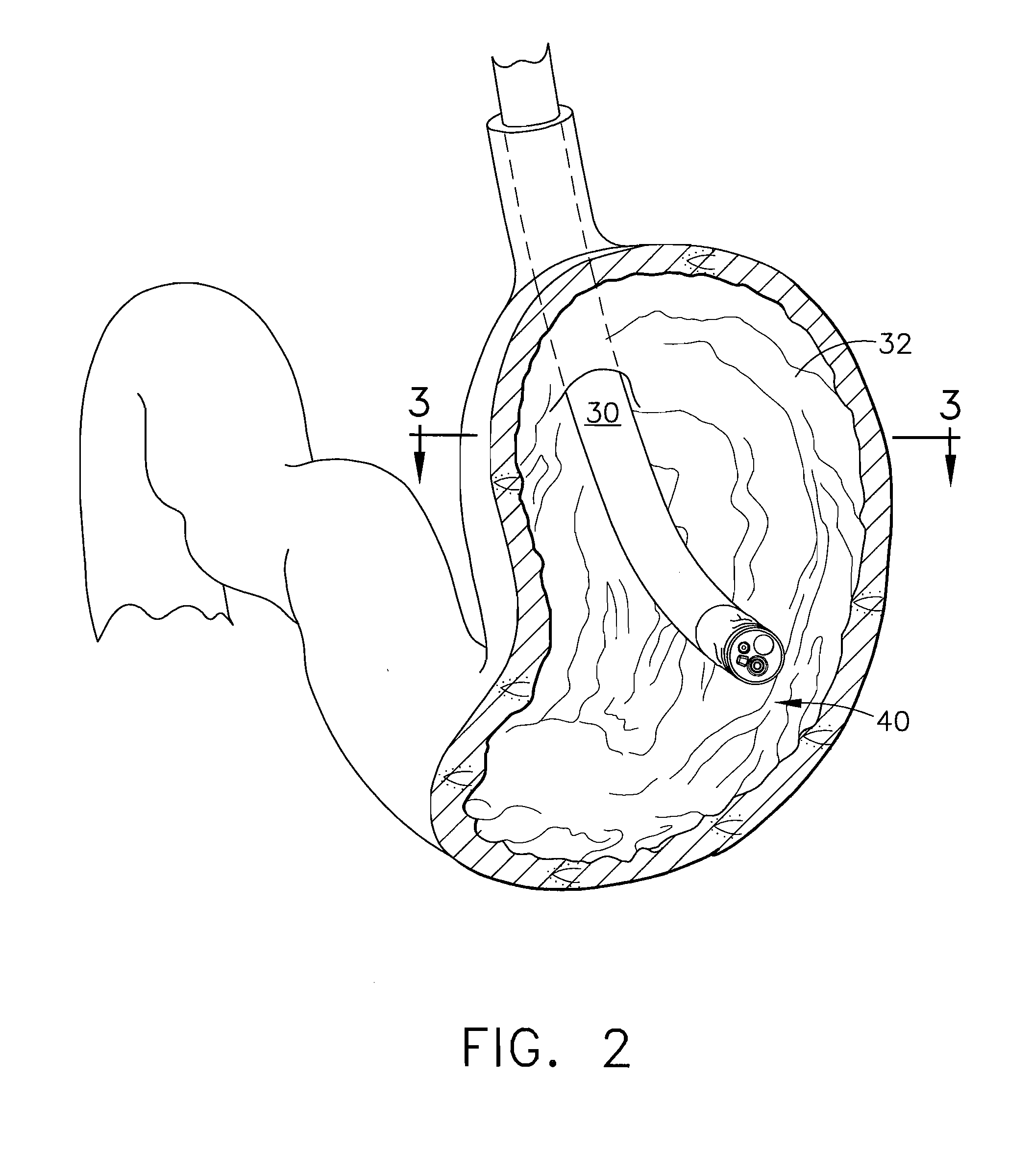Hybrid endoscopic/laparoscopic method for forming serosa to serosa plications in a gastric cavity
- Summary
- Abstract
- Description
- Claims
- Application Information
AI Technical Summary
Benefits of technology
Problems solved by technology
Method used
Image
Examples
Embodiment Construction
[0049]Referring now to the drawing figures, in which like numerals indicate like elements throughout the views, FIG. 1 is a diagrammatic view of a patient during a hybrid endoscopic-laparoscopic procedure. In the method of the present invention, folds are formed in the gastric cavity wall through a hybrid laparoscopic-endoscopic approach. In the hybrid approach, visualization of the one or more fold locations can be achieved by passing an endoscope into the interior of the gastric cavity. As shown in FIG. 1, a flexible endoscope 30 can be passed transesophageally into the gastric cavity 32. Endoscope 30 provides insufflation, illumination, and visualization of gastric cavity 32, as well as a passageway into the cavity. Gastric cavity 32 is insufflated through endoscope 30 to create a sufficiently rigid working surface that may be pierced without damaging the opposing wall of the cavity. Insufflation of the gastric cavity also allows the boundaries of the cavity and the desired locat...
PUM
 Login to View More
Login to View More Abstract
Description
Claims
Application Information
 Login to View More
Login to View More - R&D
- Intellectual Property
- Life Sciences
- Materials
- Tech Scout
- Unparalleled Data Quality
- Higher Quality Content
- 60% Fewer Hallucinations
Browse by: Latest US Patents, China's latest patents, Technical Efficacy Thesaurus, Application Domain, Technology Topic, Popular Technical Reports.
© 2025 PatSnap. All rights reserved.Legal|Privacy policy|Modern Slavery Act Transparency Statement|Sitemap|About US| Contact US: help@patsnap.com



